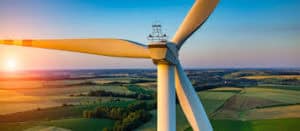 The global population is growing at a fast pace. People tend to move to cities because of what cities have to offer. However, a large number of people means that a lot of energy that is being used. On top of that, a lot of this energy is actually being wasted. In order to minimize the waste, scientists are working on more efficient and eco-friendly sources of energy.
The global population is growing at a fast pace. People tend to move to cities because of what cities have to offer. However, a large number of people means that a lot of energy that is being used. On top of that, a lot of this energy is actually being wasted. In order to minimize the waste, scientists are working on more efficient and eco-friendly sources of energy.
Heating Systems
While coal and wood are great in providing energy, there are big problems related to it. High emission of carbon dioxide is harmful to the environment as it contributes to the greenhouse effect. Nevertheless, society is running out of these resources as well.
That is why cities are moving to more sustainable sources of energy. For instance, there is geothermal energy. This form of energy is very profitable when it comes to money. It’s a perfect way to gather energy without wasting any resources except for electricity. Electricity is being used to provide geothermal pumps with power to do its job. The pumps take the water from under the ground.
Underground water can have a temperature almost as high as room temperature. This means that it only needs to be heated up a little bit before getting sent out to the heating system. The water goes through a process of heating that includes Freon gas, so there is no need for excess energy to be wasted. It goes through the system and right back into the ground. Geothermal energy is becoming popular, and bigger cities are starting to use this form of energy more and more.
Solar Panels
Some cities are installing solar panels to provide streetlights with power, instead of relying on power plants. Solar panels were a big hit when they were discovered, but until the 2010s they’ve been mostly installed as private possessions. Back in the day only some people used it as a way reduce their electricity bills, but now it has become common in most metropolises around the world.
Cities found the potential in solar panels because they found the best place to put them. High rooftops are usually unobstructed which makes them a perfect place to put solar panels on. From there it’s easy to form a minimized power grid and send the energy further.
Wind Turbines
High buildings also hide one potential sort of energy – wind. Wind turbines placed on high enough buildings can provide a lot of energy. Wind turbines are a little less efficient than solar panels. That is because they don’t depend on the stable source of energy, like the Sun. Instead, they depend on the weather. Regardless of the inconsistency, they provide us with sustainable energy. Wind turbines in cities are usually set by tenants of the building that has them. It’s expected for them to be more commonly used in the future.
Electricity for Transportation
Using electricity for transportation is beneficial for the environment. Electric cars were created with a goal to limit the usage of fossil fuels. Gas pumps are slowly converting into a source of electric power for your car. Bigger cities already have a lot of places to charge a car battery. The popularization of these cars is bringing more and more people to buy them.
Some cities are already installing public transportation systems based on electricity. This should reduce the emission of carbon dioxide significantly, since public transportation relies on bigger vehicles. However, it’s important to slowly eliminate regular cars as well. Too many vehicles on the streets can cause high pollution levels.
Energy-Efficient Building Regulations
Cities depend on citizens, and most laws and regulations are being passed for the wellbeing of their communities. By providing some energy-efficient building regulations, cities are making sure that nothing is being wasted. Older buildings should be renovated to suit these standards. When it comes to new buildings, they should be built by following certain standards.
